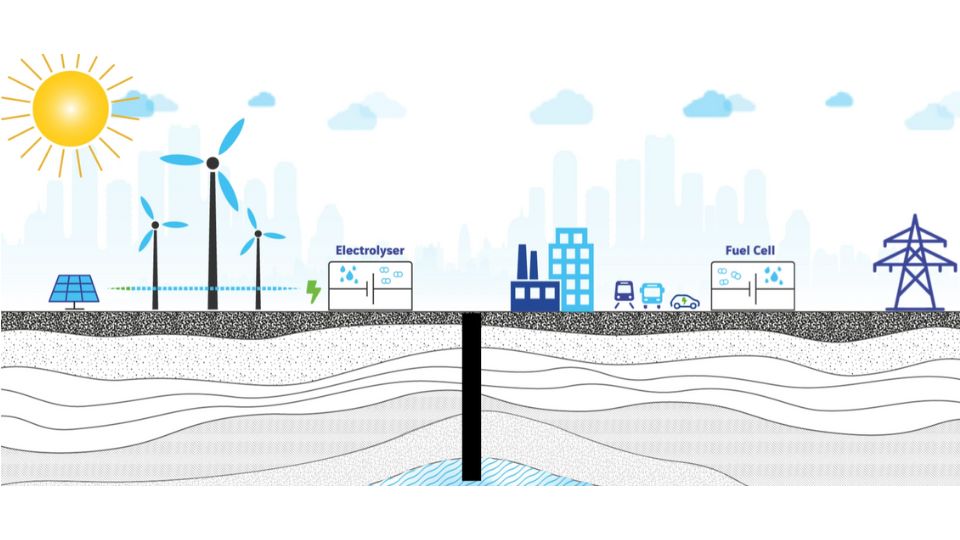The challenges of underground hydrogen storage in Europe
Imagine a future where clean energy flows through our cities and powers our industries. A future where green hydrogen takes centre stage. To realise this vision, we need to find a safe home for hydrogen. Underground storage is that home, an underground shelter where renewable energy can wait until we need it.
Green hydrogen is positioned as a key part of the energy transition to a more sustainable future. However, its large-scale integration into the European energy system requires efficient storage solutions. Underground storage emerges as a promising option, but faces a number of regulatory and economic challenges that hinder its deployment.
This article will explore the main obstacles preventing the wider adoption of underground hydrogen storage in Europe, as well as the opportunities and solutions that can boost its development.
The potential of underground hydrogen storage
Underground hydrogen storage offers multiple advantages:
Flexibility: It allows large quantities of hydrogen to be stored to balance renewable energy production and demand.
Safety: Salt caverns and other underground reservoirs have proven to be safe for long-term hydrogen storage.
Efficiency: Minimises hydrogen losses during storage and recovery.
Scalability: Enables large-scale storage facilities to be built to meet future needs.
Regulatory challenges
Despite its advantages, underground hydrogen storage faces a number of regulatory challenges:
Lack of a coordinated European strategy: The absence of specific regulation for hydrogen storage creates uncertainty for investors and makes long-term planning difficult.
Complex and lengthy administrative procedures: Permits and authorisations needed to develop underground storage projects are cumbersome and time-consuming.
Unclear targets: The lack of clear and detailed targets for hydrogen storage prevents proper planning and allocation of necessary resources.
Economic challenges
The economic challenges of underground hydrogen storage include:
High upfront investments: Building underground storage infrastructure requires significant investments.
Uncertain business models and financing: Unclear market conditions make it difficult to define profitable business models and attract investors.
Market risks: Volatile hydrogen prices and uncertainty about future demand create risks for storage operators.
Successful case histories and assessment tools
Gianluca Greco, Head of Consultancy and Training at Aragon Hydrogen Foundation, highlights the participation of the Foundation in several underground hydrogen storage projects, one of them is Hyunder, a project coordinated by Aragon Hydrogen Foundation and pioneer in techno-economic feasibility of salt caverns for underground hydrogen storage.
In addition, within the Hystories project, the Foundation led techno-economic regulatory studies of social and environmental impact for different case studies that were foreseen within the framework of this project and “we co-lead subtask E, which refers to the economic aspects for the integration of hydrogen storage tanks in the business market within the TCP Task42 collaboration programme, a programme promoted by the International Energy Agency,” Greco points out.
The tools developed in these projects allow different scenarios to be simulated and the costs and benefits associated with each project to be assessed.
Underground hydrogen storage is central to the energy transition, but its development requires addressing a number of regulatory and economic challenges. To accelerate its deployment, it is necessary to:
Establish a clear and stable regulatory framework: Define clear rules and standards for hydrogen storage, simplify administrative procedures and ensure legal certainty for investments.
Incentivise investment: Develop attractive financing mechanisms for investors, such as grants, loan guarantees and long-term contracts.
Encourage cooperation: Promote collaboration between European countries, companies and research centres to share knowledge and experience.
Conducting feasibility studies: To comprehensively assess the technical and economic viability of underground hydrogen storage projects.
Small-scale pilot projects can help demonstrate the technical and economic feasibility of underground hydrogen storage and build confidence in the technology. In addition, the creation of hydrogen clusters integrating hydrogen production, storage and consumption in specific regions can accelerate the development of hydrogen clusters.
Why do we need to store hydrogen?
Hydrogen production from renewable sources has inherent variability due to the intermittent nature of these sources. Underground hydrogen storage (OSAH) emerges as an effective solution to address this issue. AASS allows for:
Balance supply and demand: By storing hydrogen produced at times of low demand or high generation, a stable supply is guaranteed even during periods of low renewable production.
Increase system flexibility: AASSs allow hydrogen production to be adapted to changing market needs, improving the efficiency of the energy system.
Reducing dependence on fossil fuels: Underground hydrogen storage facilitates the substitution of fossil fuels in sectors that are difficult to electrify, such as industry and heavy transport.
In conclusion, underground hydrogen storage has the potential to play a crucial role in the energy transition. However, its development requires overcoming a number of regulatory and economic challenges. By taking the right steps, Europe can position itself at the forefront of this technology and contribute to building a more sustainable energy future.



